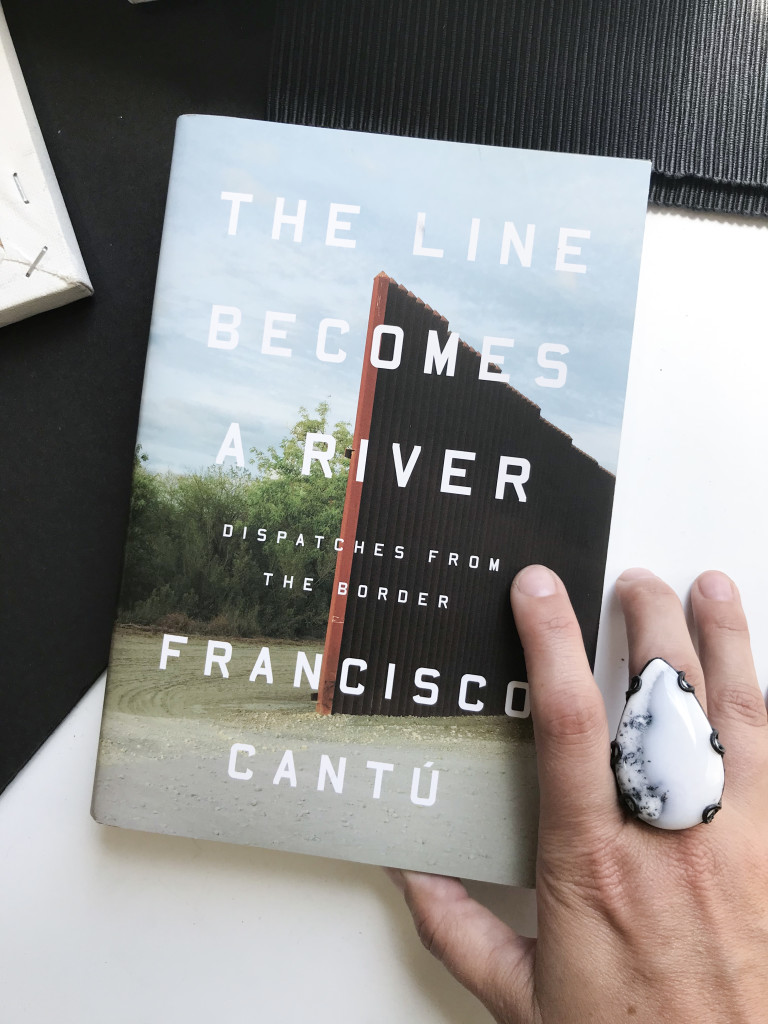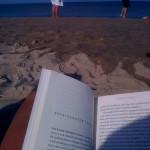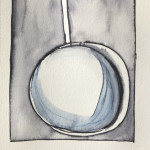
Back in the early(ish) days of this blog, before most of my attention was sucked away by social media, I used to share what I was reading. And I’ve decided now is a good time to get back to that, especially since I just finished this incredible book. (And since a lot of what I’m reading right now is related to ideas I want to work out in my paintings.)
I discovered The Line Becomes a River: Dispatches from the Border after I went searching for books to help me better understand the current tension between the US/Mexico border, especially in light of the current administration’s abhorrent practice of separating children from their parents and placing them in cages. And I’m not going to lie, the lyrical title and cover image made this book an obvious place to start for me.
Cantú writes from a unique position as a bilingual Mexican-American, a scholar who has studied the border, the son of a former National Park Ranger, and a former Border Patrol agent. (A job he took to help him better understand the realities of the border.)
The book is broken into three parts, and the first part, starting with a trip Cantú takes with his mother to visit her former park, has the lyrical sense of some of my favorite nature writing, like that of Annie Dillard.
The book takes a turn in the second section, as Cantú describes the horrors of the rise of drug and gang-related violence across Mexico. I have to admit this section gave me a lot of fear and anxiety (which was exacerbated as people were setting off fireworks in my neighborhood). But the brilliance of this book is that, once I pushed through, it gave me a huge perspective on how this fear impacts both sides of the debate. It is, of course, this sense of fear that allows conservatives to engage in their hurtful policies of closing the border. And they have gained support by instilling this fear in their followers.
But it’s also important to realize that the fear and anxiety I felt while reading this and the fear that has been planted in the minds of many Americans is nothing compared to the actual fear felt by the people who experience this violence every day. That is real fear and terror, and it is this fear that compells Latinx people to risk their lives to attempt to come into America.
And for me, that is the key takeaway from this book. That instead of using this fear as a tool to try and keep people out, we need to approach it from a place of empathy to help the people who are trying to come in. To understand that they are fleeing something very real and truly terrible, and that most are simply people looking for a better life for themselves and their families.
Cantú drives this point home in the third section, which focuses on his friend José, a long time resident of the US who returns to Mexico to see his dying mother, and is detained upon attempting to re-enter. Cantú shares his frustrations as José makes every attempt to return to the US in order to be with his wife and three sons, and we get a firsthand understanding of just how much these policies hurt good people and their families.
The Line Becomes a River doesn’t try to give answers to the current problems, but instead gives humanity to a situation that is often portrayed in abstract, faceless ways in the American media. Which is exactly why everyone should read it, because only through a human, empathetic response can we begin to truly find real solutions.
{PS. The link to the book is an affiliate link and similar rings to the one I’m wearing are available in my online store.}




Leave a Reply